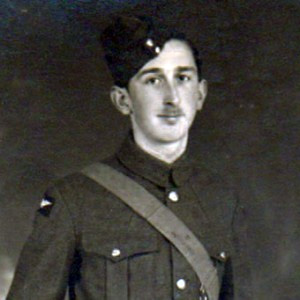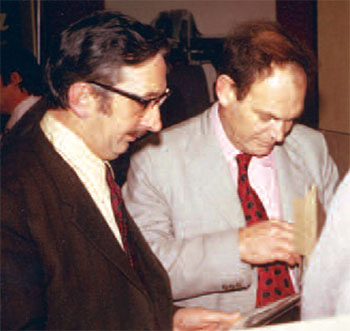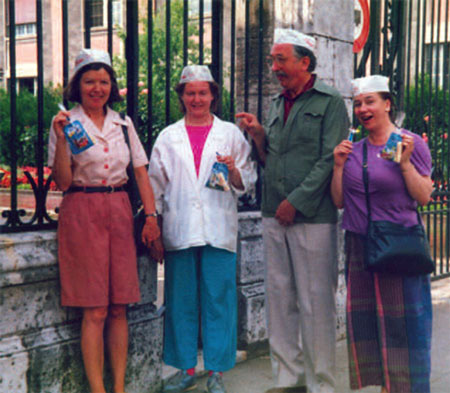Summary
- Godfrey Hounsfield in an example of how a person who failed at school can benefit from a second chance, in his case from the Royal Air Force.
- Until they saw the first scans few medical experts expected CT to have any useful impact. Godfrey said ‘look we can get orders of magnitude more sensitivity’, and they replied ‘so what?’
- Making such a breakthrough always needs determination and perseverance, which in Godfrey’s case was supplemented by a remarkable degree of intuitive insight.
- Each new discovery brings with it the seeds of other, future, inventions. There are many discoveries, probably just around the corner, waiting for someone to bring them to life. Could this possibly be you?

On 1 October 1971, a machine built by an unassuming British engineer – Godfrey Hounsfield – took its first CT scan of a patient at Atkinson Morley Hospital (part of St. George’s, London) under the supervision of Dr James Ambrose. They had pioneered an entirely new machine which became a household name, the CT scanner. It was a remarkable event. Godfrey had no previous experience of working in the medical field but was an engineer who had spent his working life, prior to X-ray scanners, developing computers and radar. His life provides an insight into the way in which inventions grow from initial conception and become reality through the sheer perseverance and determination of one remarkable individual. It is also a strong example of how a person who failed at school can benefit from a second chance.
Godfrey was born in 1919 and grew up on a small farm in Sutton-on-Trent. He left school at age 16 with no qualifications. His school record card discusses his “intellectual retardation”, and he did not study at a university. So his early years did little to suggest that he would pioneer such a great medical breakthrough or be awarded the Nobel Prize.
He volunteered for the Royal Air Force in October 1939, and his wartime years, during which he became a radar instructor, were a major turning point. His work on radar for the RAF gave him a very vivid example of a new technology which was hundreds of times better than the previous method, because navigating by dead reckoning had large errors if the wind speed changed. Godfrey’s subsequent projects can be seen as a constant search to find other fields which could be improved by large factors such as a hundred.
Initially he worked in RAF Maintenance Units which salvaged parts from crashed aircraft. It is not clear how he made the leap from that work to becoming an instructor in the new (and top secret) topic of radar in 1943. He had experimented with electronics at home before the war, so perhaps some work on repairing aircraft radios drew attention to him. After he joined the radar team his work quickly drew attention from a very senior officer, Air Vice-Marshal John Cassidy. After the war John Cassidy helped Godfrey to get a grant to study at Faraday House college, which gave him a diploma.2 The course was mostly on electric motor design, with little maths beyond school-level, so it contributed little to his work on CT except that it was useful when seeking a civilian job.
He joined the EMI company, where he worked on radar and computers until 1967. He led the design team for the EMIDEC 1100 computer which was successfully launched in 1957, mostly using skills which he had taught himself or learnt in the RAF. It was hundreds of times more reliable than earlier computers (such as Alan Turing’s Pilot ACE) because it used an ingenious combination of transistors and magnetic torroids instead of valves.
In 1967 Godfrey’s previous projects ceased to be of interest to EMI because of changes in company strategy. He was asked to suggest a new line of work involving pattern recognition, and he suggested what eventually became CT scanning. The company were unenthusiastic because they had no significant medical business, Godfrey had no medical knowledge, and his proposal was a high-risk leap beyond existing technology. So they sought external funding, and Godfrey managed to get a small amount of money from the Department of Health. His struggles for funding continued for the next four years, as he eked out the tiny amounts available from the DoH. The myth that his work was funded by The Beatles or from EMI’s music profits is disproved by internal EMI documents.
He also had to struggle against adverse market research – visits to the radiology experts at the leading hospitals found that almost everyone (with notable exceptions James Ambrose,Louis Kreel,Evan Lennon and Frank Doyle) thought that his proposal was pointless. In 1970, most radiology experts thought that the future lay in higher spatial resolution versions of film radiography. They did not believe that Godfrey’s proposal would show anything useful, perhaps because they did not anticipate that the vastly improved accuracy of density measurements would more than compensate for the fact that his first CT scanners could not resolve details of under 1.5mm. As Henry Ford once said “If I had asked people what they wanted, they would have said faster horses.” Godfrey’s recollection was “I kept on saying ‘look we can get orders of magnitude more sensitivity’, and they said ‘so what?’. They couldn’t understand that they would be seeing much more with my technique, as organs would be defined separately. It was very discouraging.” Godfrey had correctly forecast that the absorption accuracy would be better than 0.5%, but nobody knew in advance that this would be valuable.

Everything changed after the first publication of the early CT scans in 1972. As soon as people saw those images they realised how valuable they were. Godfrey was inundated with orders for scanners and received a knighthood and dozens of academic awards. But it had been a long and difficult road to reach that point. His life would have been easier if he had chosen a project which optimised technology which his employer was interested in, rather than revolutionising a field which was new to him and to his company. He persevered because he knew that he was on the track of a hundred-fold improvement, and that vision drove him on.
Godfrey thought in an unusual way which he described as “you’ve just got to use the absolute minimum of maths but have a tremendous lot of intuition”.3 This is easy to say, but very hard to get right. He used a lot of pictures and mental models,a lot of analogies, and he had a lot of curiosity about how everything in the world worked. This was uncomfortable for academics. How could this highly mathematical field be opened up by someone who was not an academic, not a mathematician, but a man who used the subversive art of intuition? Godfrey’s answer would probably have been that he worked it out from first principles.
The prize money from Nobel and from the 1972 MacRobert award gave him financial independence, but he chose to continue working full time until his health failed at age 84. His work after CT included a room-temperature scanning tunnelling microscope which aimed to increase computer memory capacity by a factor of thousands. He designed software for artificial neural networks and to simulate genetic evolution. He assisted the team at Royal Brompton Hospital who were working on motion correction in MRI scans. One of Godfrey’s computer programs took 2 hours to analyse each MRI dataset, and it is typical of the man that he set his alarm clock to wake himself up every 2 hours through the night so that he could make progress as quickly as possible.

Sir Godfrey Hounsfield rarely used his title, preferring to be called Godfrey. He liked working in small teams, but he was always slightly outside the formal structure – a man who set his own rules. Although some people of his seniority rarely talked to those beneath them,he would talk to anybody who was interested in his work, whether it was the cleaner, the panel-beater or the managing director. He was sociable: people who met him socially would see him as an amiable person who helped to wash up the coffee cups, and he’d prefer not to tell them of his past achievements. His focus was the future.
From his teenage years onwards he was interested in how things worked, and in how science and engineering could help to improve the world. He wanted to pass this enthusiasm on to the next generation. Although he dreaded public speaking, he agreed to speak to pupils at his former school. He wanted to tell them that “each new discovery brings with it the seeds of other, future, inventions. There are many discoveries, probably just around the corner, waiting for someone to bring them to life. Could this possibly be you?”. What an inspirational message!4
References
- Bates SR, Beckmann EC, Thomas AMK, Waltham RM. Godfrey Hounsfield: intuitive genius of CT. London: British Institute of Radiology, 2012 http://www.bir.org.uk/publications
- Nobel Foundation. Autobiography 1979. Available at: http://www.nobelprize.org/nobel_prizes/medicine/ laureates/1979/hounsfield.autobio.html
- Süsskind C. The invention of computed tomography. In “History of technology 1981.” Hall AR, Smith N, editors. London: Mansell Publishing; 1981:39.80.
- Godfrey’s speech is available on the Links page of the following website: http://www.nobelprize.org/nobel_prizes/medicine/laureates/1979/hounsfield-bio.html